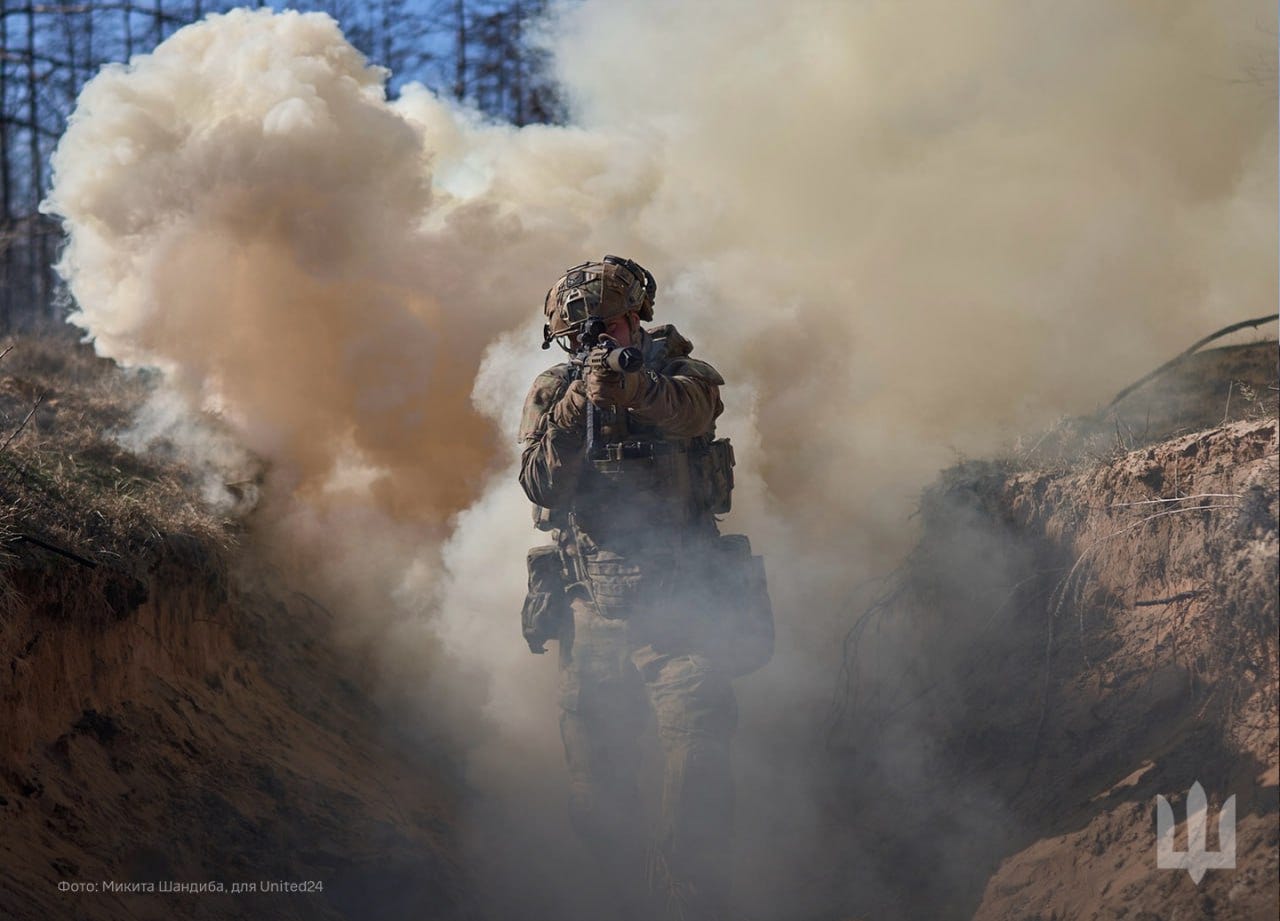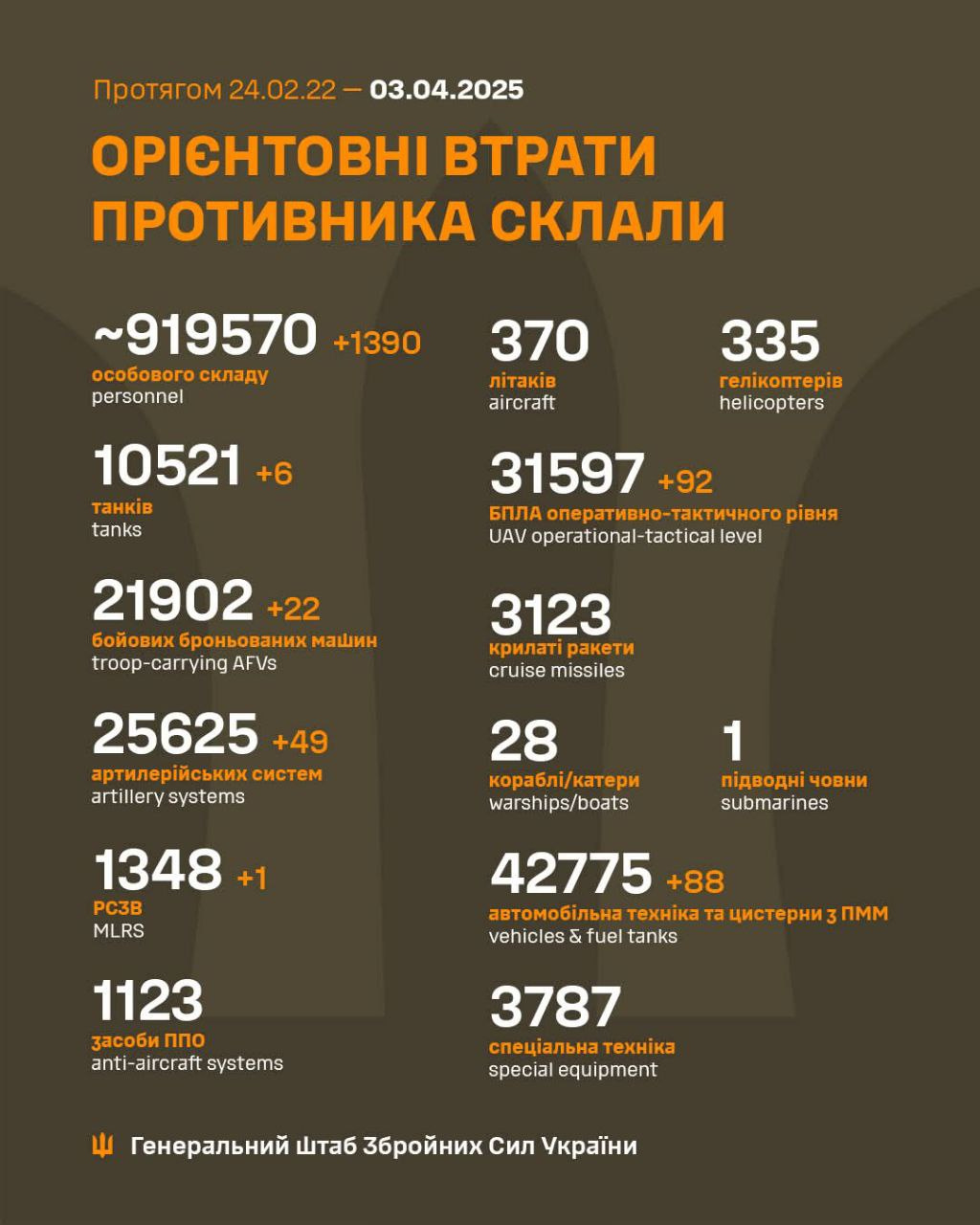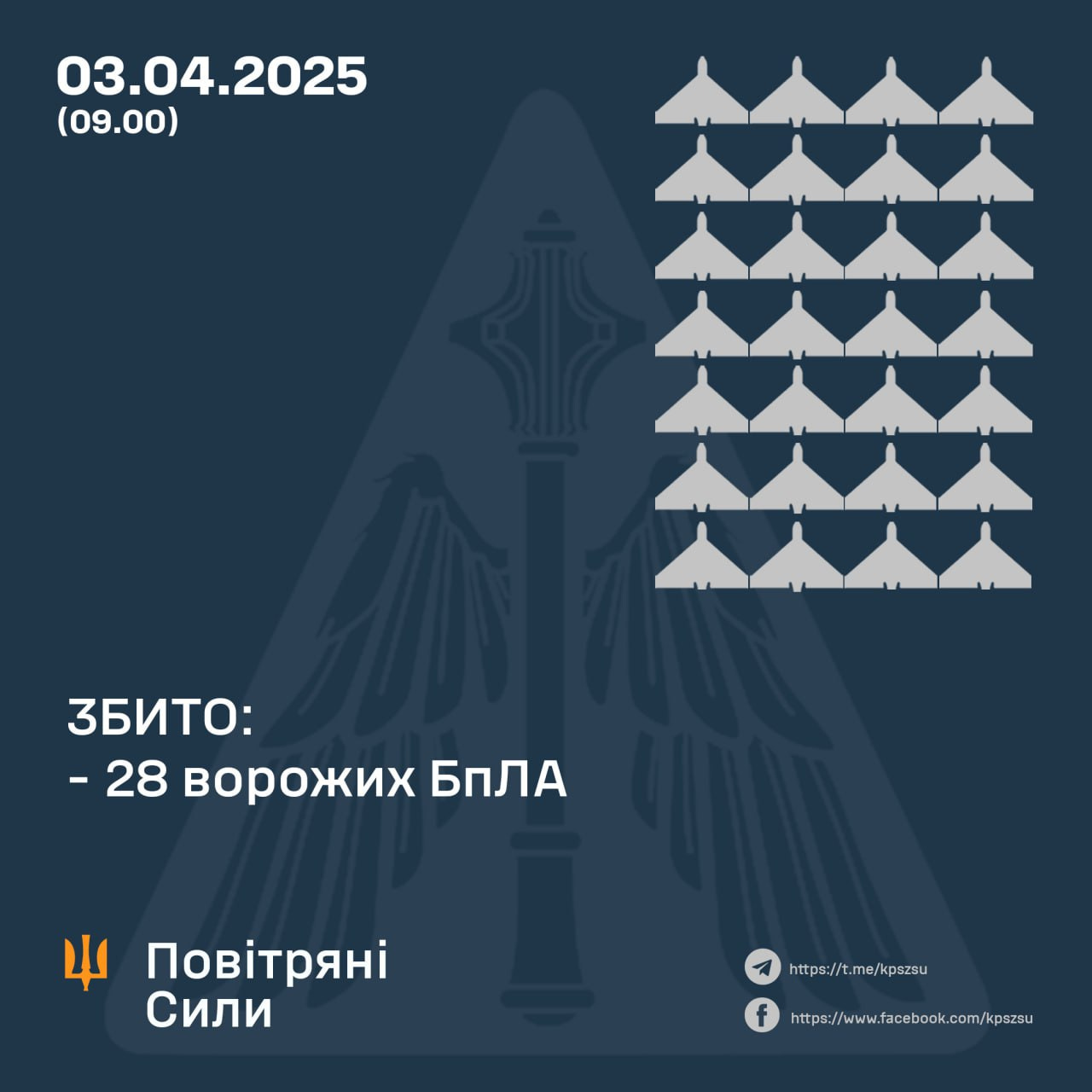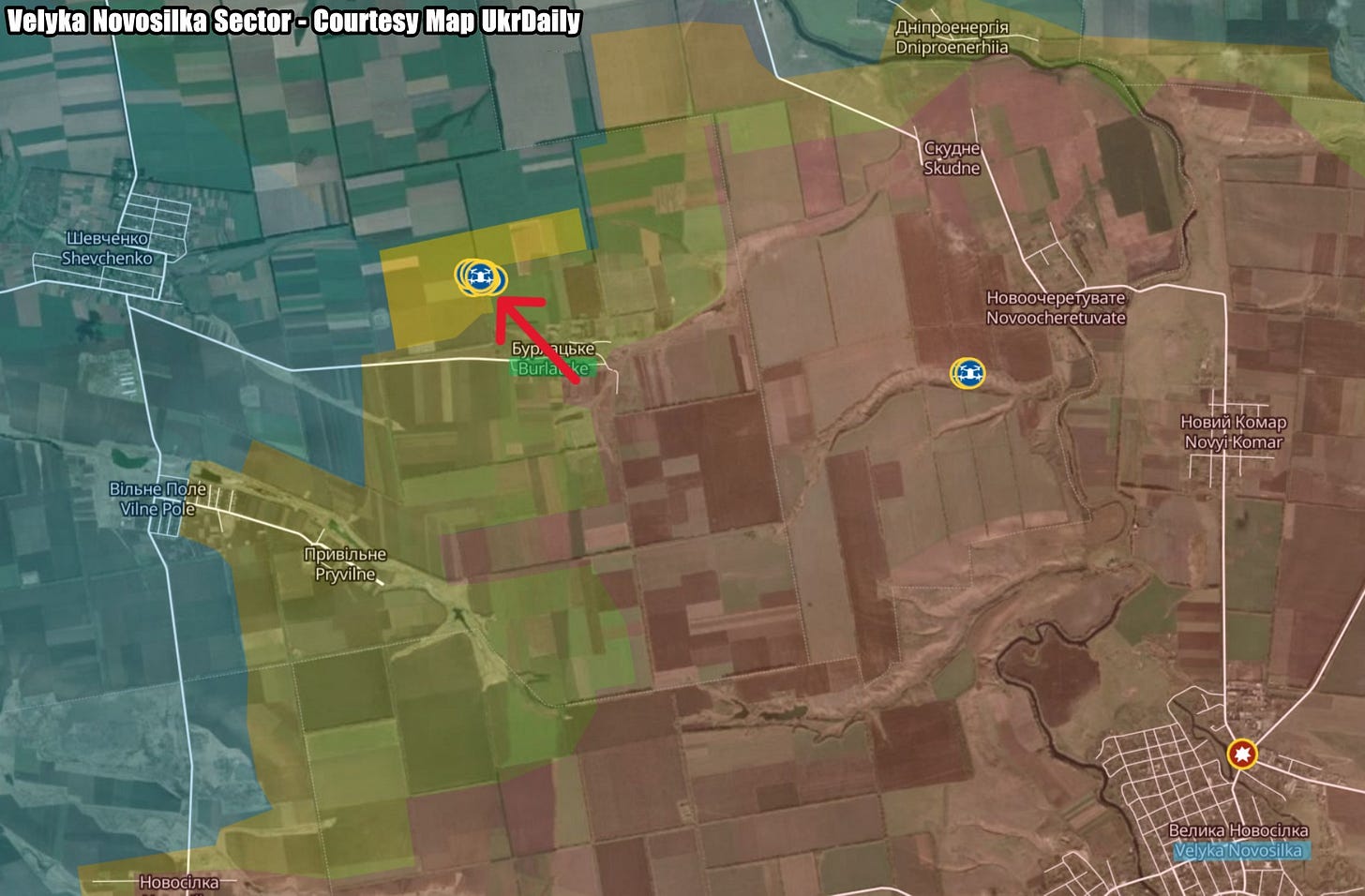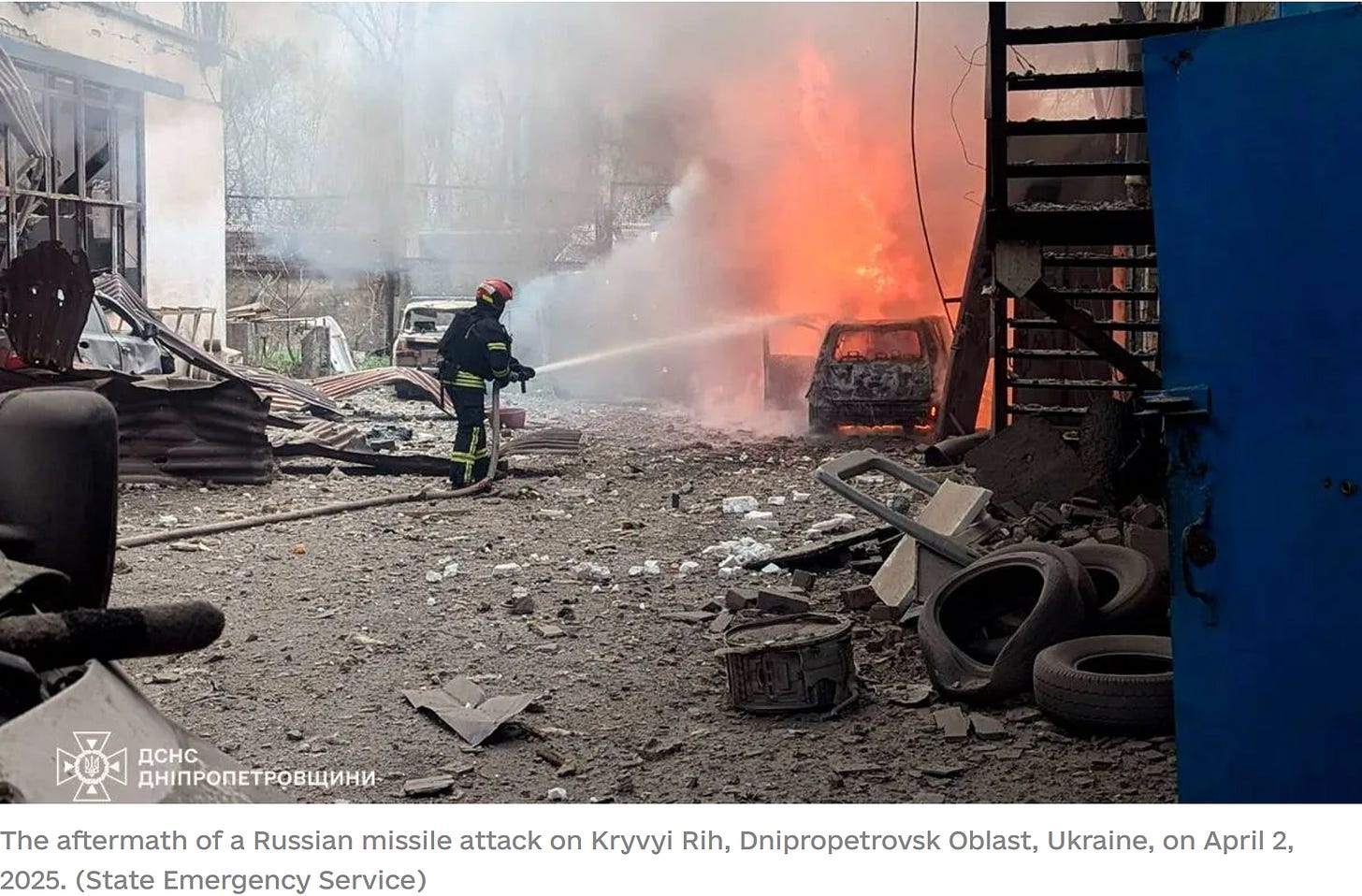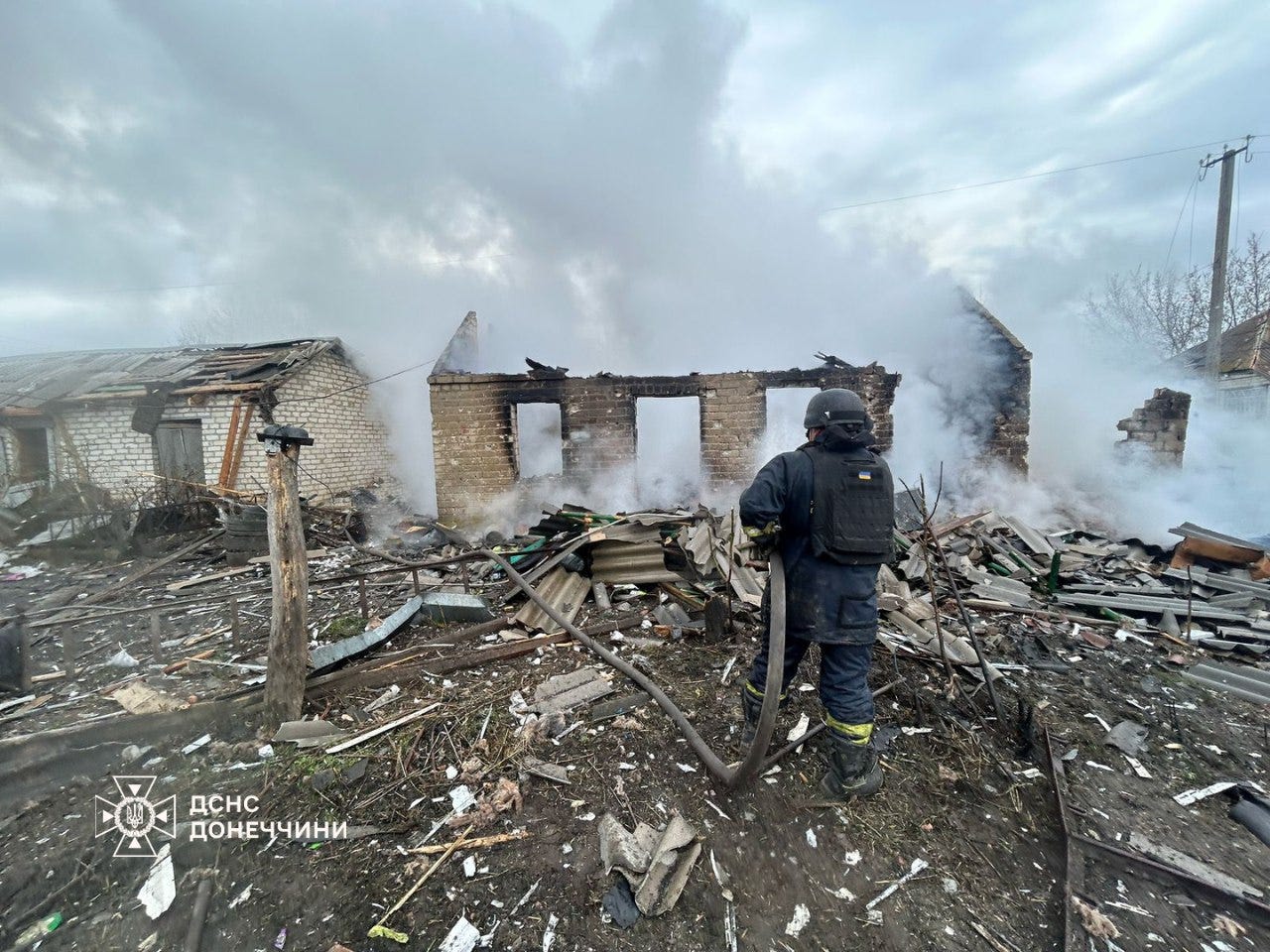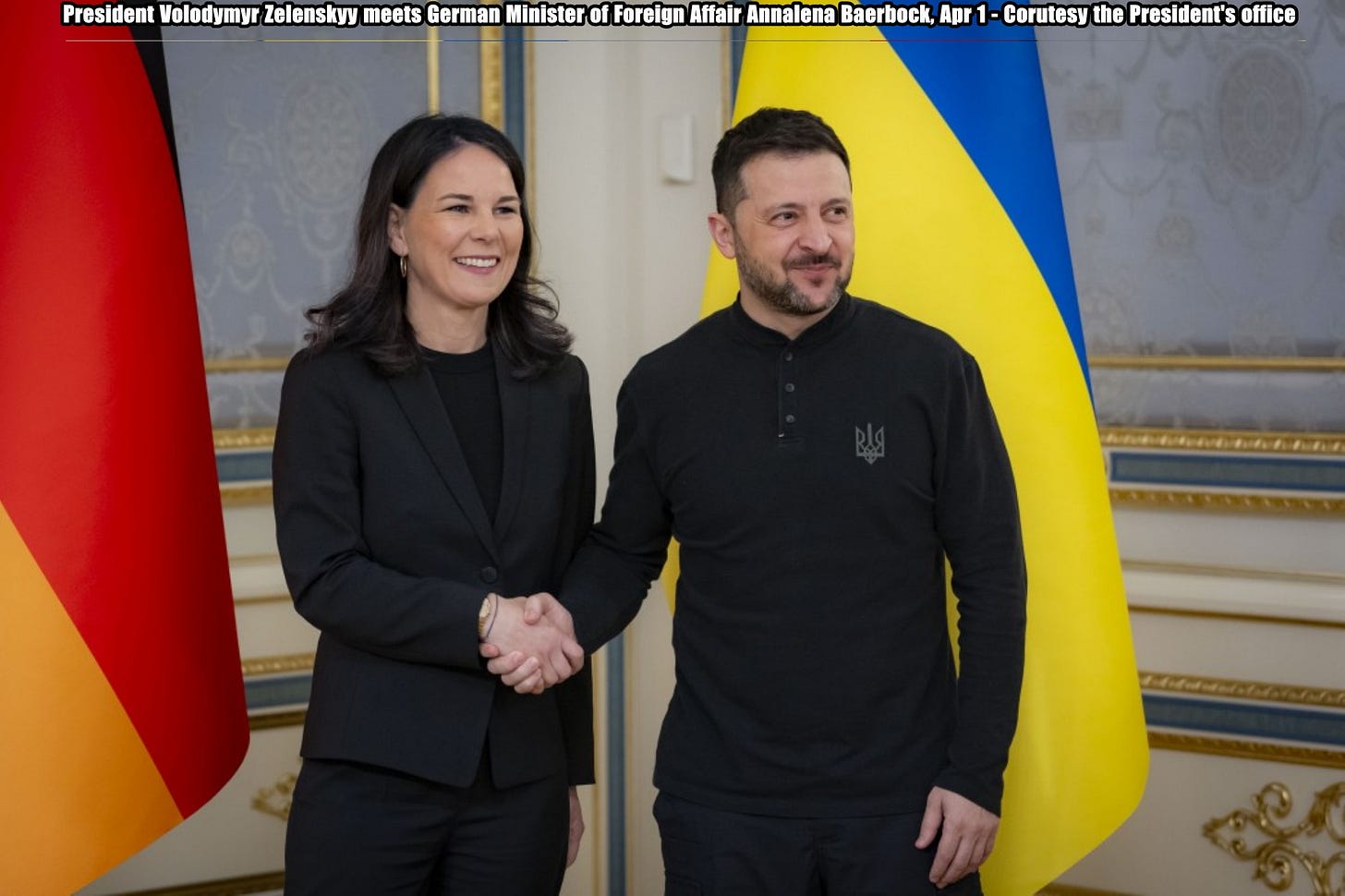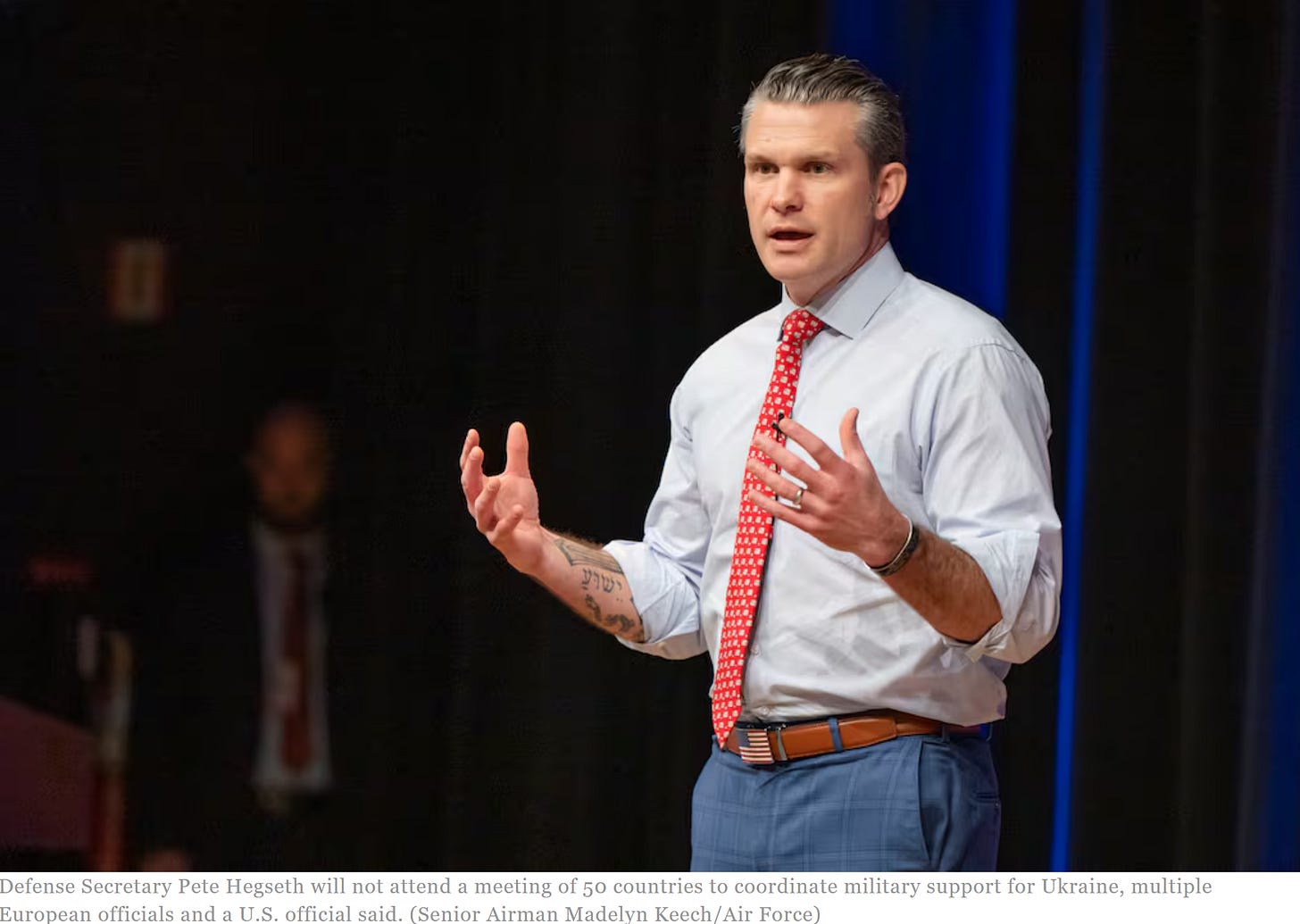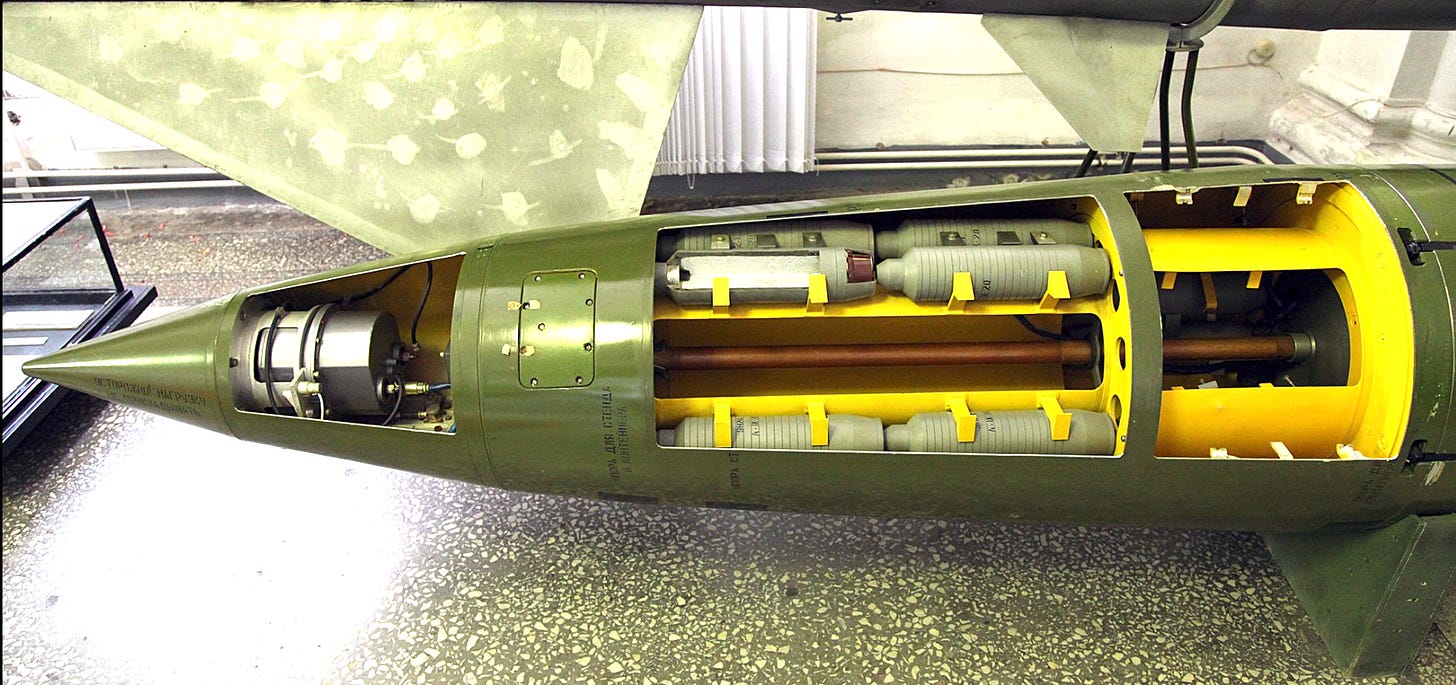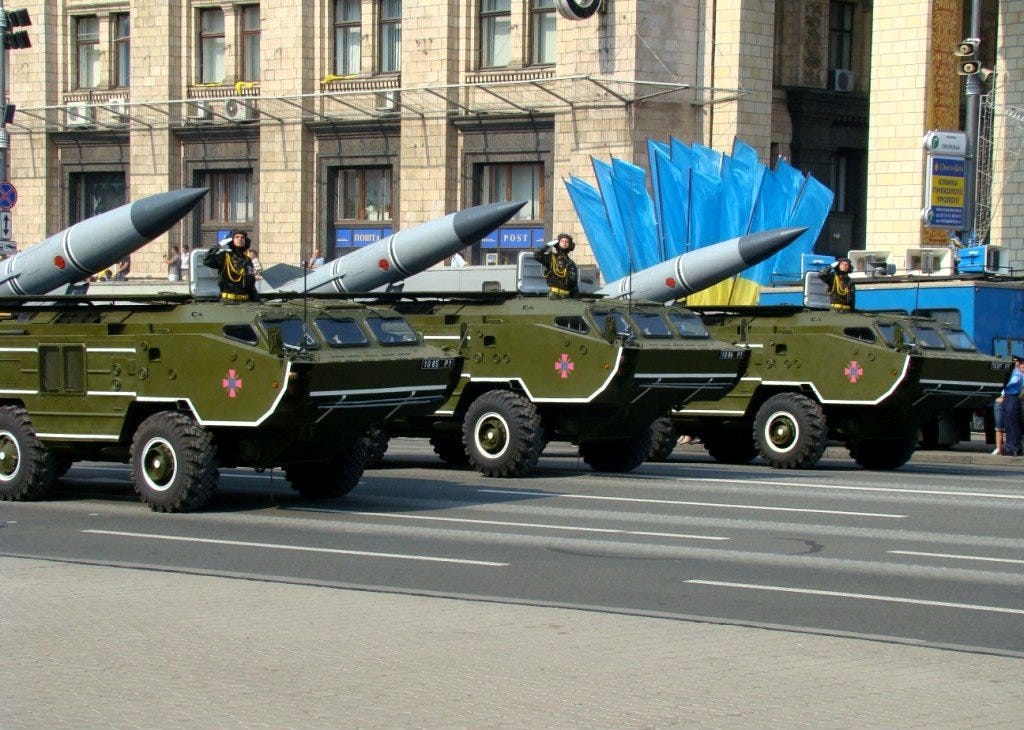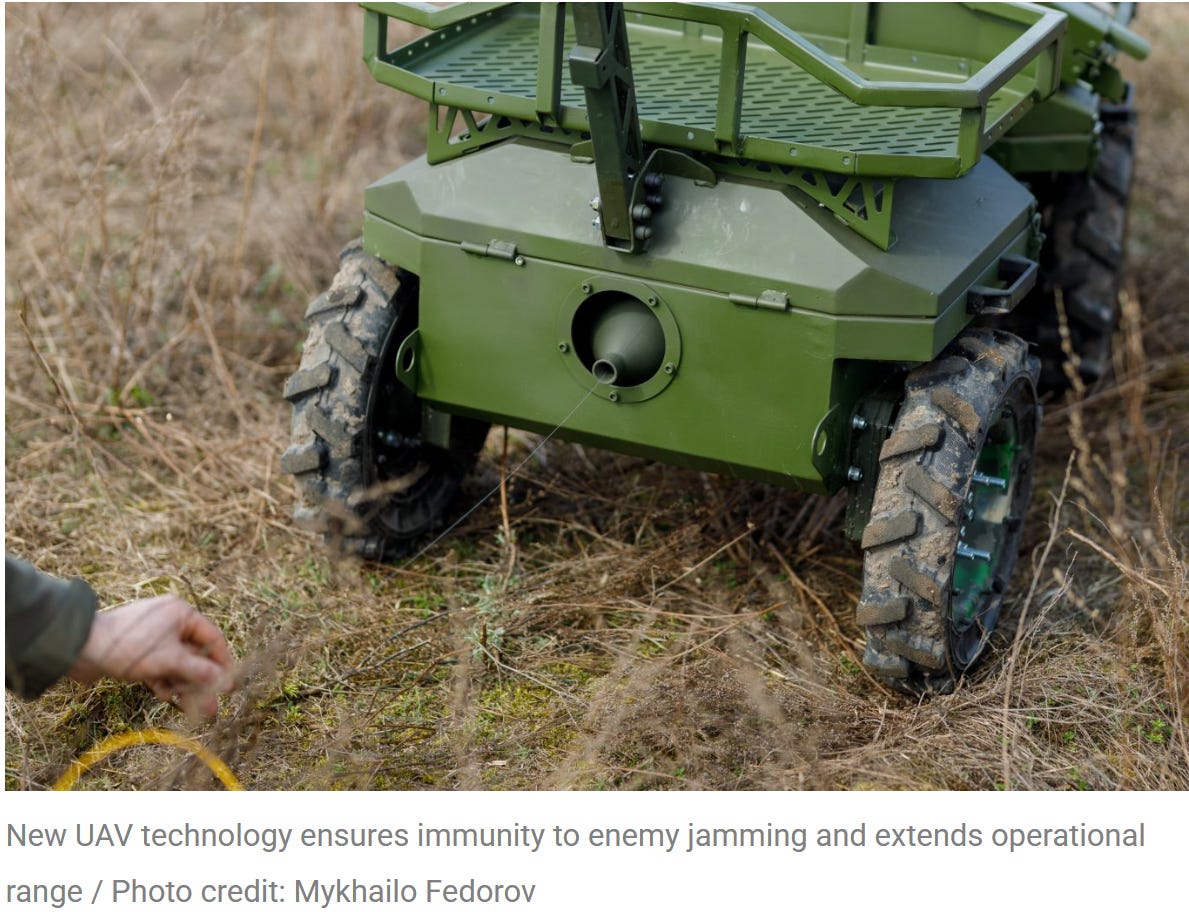Slava Ukraini! In early 2022 I began a Telegram channel aggregating news from a number of sources daily on the war in Ukraine. In June 2023 I began providing a daily draft for the Ukraine War Brief Podcast collecting news from over 70 sources daily, which formed the basis of the script. While the Podcast no longer exists I have continued to make this Brief available for my followers here on Substack for those who wish to keep up with the news from the war.
All the latest news on the Russo-Ukraine War 6 days per week
ALONG THE CONTACT LINE
GSAFU Morning Report
For: Apr 3, 2025
The General Staff of the Armed Forces of Ukraine in its Operational Information update at 08:00 on Apr 2 stated that day 1135 of the full-scale invasion of the Russian Federation against Ukraine had begun.
The situation on the line of combat remains tense in some sectors. Ukrainian defenders continue to actively counteract the Russian aggressor, causing them significant losses in personnel, equipment and technology. Exhausting the enemy along the entire front line and continuing to disrupt the plans of Russian occupiers to advance deeper into the territory of Ukraine.
During the past day, 216 combat engagements took place.
Over the past 24 hours, the enemy carried out 2 missile strikes, 85 air strikes, used 2,377 drones and fired approximately 6,400 artillery shells across the positions of Ukrainian forces and civilians.
Air Force Daily Report
28 ENEMY UAVS SHOT DOWN, 7 SIMULATOR UAVS FAILED TO REACH THEIR TARGETS (LOCATIONALLY LOST)
➖➖➖➖➖➖➖➖➖
On the night of Apr 3, 2025 (from 9:00 p.m. on Apr 2), the enemy attacked with 39 Shahed attack UAVs and simulator drones of various types from the directions: Millerovo, Primorsko-Akhtarsk, Kursk - Russia.
The air attack was repelled by anti-aircraft missile troops, electronic warfare units, and mobile fire groups of the Defense Forces of Ukraine.
As of 09:00, it has been confirmed that 28 Shahed attack UAVs (and other types of drones) have been shot down in the north and east of the country.
7 enemy drone simulators — lost in location (without negative consequences).
The Kharkiv, Donetsk, and Dnipropetrovsk regions were affected by the Russian attack.
Combat Operations in the Russian Federation
The Institute for the Study of War (ISW), a US based think tank, in its Apr 2 Russian Offensive Campaign Assessment reported that:
Kursk Salient: Russian forces continued offensive operations along the Sumy-Kursk Oblast border on April 2 but did not make confirmed advances.
Belgorod Incursion: Russian forces continued offensive operations in northwestern Belgorod Oblast on April 2 but did not make confirmed advances.
The Khortytsia operational-strategic group
(Responsible for the northeastern part of Ukraine. )
There have been no major changes to the combat environment since our last report.
The Tavria operational-strategic group
(Responsible for the central-eastern and southeastern part of Ukraine.)
Pokrovsk Sector : Ukrainian and Russian forces recently advanced in the Pokrovsk direction.
Geolocated footage published on April 1 indicates that Ukrainian forces recently advanced southeast of Kotlyne (southwest of Pokrovsk).[65]
Geolocated footage published on April 1 indicates that Russian forces recently advanced in western Lysivka (southeast of Pokrovsk) and southeast of Bohdanivka (southwest of Pokrovsk).
Velyka Novosilka Sector: Russian forces recently advanced near Velyka Novosilka.
Geolocated footage published on April 1 indicates that Russian forces recently advanced northwest of Burlatske (northwest of Velyka Novosilka).
The Odesa operational-strategic group
(Responsible for Kherson, Qırım, (also known as Crimea) and the Black Sea.)
There have been no major changes to the combat environment since our last report.
TEMPORARILY OCCUPIED TERRITORIES
Nothing major to report.
THE HOME FRONT
5 killed, 40 injured in Russian attacks on Ukraine over the past day.
Russian attacks across Ukraine killed at least five civilians and injured at least 40 over the past day, the Kyiv Independent reported citing regional authorities on April 3.
Moscow's forces attack Ukrainian towns and villages on a daily basis, inflicting civilian casualties and damage to infrastructure with drones, missiles, artillery, and aerial bombs.
Russia launched a missile attack against the city of Kryvyi Rih in Dnipropetrovsk Oblast on April 2, killing four people and injuring 17, Governor Serhii Lysak reported. Eleven people remain hospitalized.
Nine high-rise buildings, gas stations, administrative buildings, a post office, garages, and cars were damaged.
Elsewhere in the region, Russian attacks injured a man and a woman in the Nikopol district and a woman in the Synelnykove district, Lysak said.
In Donetsk Oblast, a Russian attack against Pokrovsk killed one person and injured six, Governor Vadym Filashkin reported. One civilian was also injured in the town of Dobropillia.
Seven people were injured in Russian attacks against Kharkiv Oblast, said the regional governor, Oleh Syniehubov. This included five people, including a 10-year-old child, injured when a Russian drone hit a 16-story residential building in Kharkiv.
Four people were injured in Russian strikes in Kherson Oblast, according to Governor Oleksandr Prokudin. A high-rise building, a shop, and eight houses were damaged.
Russian attacks in Sumy Oblast injured two civilians and damaged a youth center and a bank, the regional military administration reported.
RUSSIAN WORLD
Large Fire Breaks Out at Shipbuilding Plant in Northwestern Russia.
A large fire broke out at a shipbuilding plant in the northwestern republic of Karelia, regional authorities said early Thursday, the Moscow Times reports.
The blaze was first reported at 9:50 a.m. local time and spread to an area of about 1,500 square meters (16,146 square feet), according to emergency officials. The state-run TASS news agency reported that an exploding gas cylinder caused the fire.
Petrozavodsk’s Onega Shipbuilding and Ship Repair Plant, where the fire erupted, builds and repairs cargo vessels, as well as smaller service ships, such as tug boats and fishing boats.
Republic of Karelia head Artur Parfenchikov wrote on his Telegram channel that the fire was “fully extinguished” as of 12:26 p.m. local time.
Parfenchikov said three people were injured in the blaze but added that no one was killed. TASS reported that two of those who were injured are on ventilators and remain in critical condition.
The local prosecutor’s office launched an investigation into the fire.
Russian Firms Lure South Asian Migrants Amid Historic Labor Shortage.
Among the hundreds of YouTube videos about working in Russia, one in particular stands out. The Moscow Times reports.
The professionally made clip advertises job opportunities at Ozon, Russia’s second-largest online marketplace, to workers from South Asian countries.
Speaking in Hindi, a supervisor at Ozon subcontractor Argument describes the hiring process for the 152,000-square-meter warehouse in Pushkino, a town 30 kilometers northeast of Moscow.
The company is ready to provide workers with accommodation, health insurance, work attire, food and Russian classes to pass the test for obtaining a Russian work permit — all free of charge.
Russia’s unemployment rate has fallen to historic lows, shrinking almost twice since February 2022, from 4.3% at the end of 2021 to 2.3% in 2024.
“Warehouse staff has always been in short supply in Russia, even in good years. Somehow, this gap was covered, albeit poorly, by migrants in an uncontrolled flow,” the anonymous businessman said.
Russia’s war on Ukraine and the March 2024 terrorist attack at a concert venue outside Moscow — which led authorities to tighten the screws on migration — only worsened the situation.
Today, the lack of people is Russia’s biggest problem, which was already affected by the low birth and high death rates, former Central Bank advisor Alexandra Prokopenko said in a recent analysis.
Almost half of Russian companies said they struggle to find workers on the market as almost 30% of large Russian companies rely on the foreign workforce.
“The problem is very serious,” the anonymous businessman said, adding that his own business cannot scale up due to the shortage of workers.
“Russia lacks sufficient human resources to simultaneously continue the war and ensure economic growth, and attracting more migrants is not an option either," Prokopenko wrote.
Prokopenko noted that the front line takes over 10,000 people monthly, and the private sector's salaries fail to compete with salaries and bonuses paid out to those who sign military contracts.
This month, Economy Minister Maxim Reshetnikov said Russia needs to expand its efforts to attract migrants from countries outside its usual recruitment pool.
A government source recently told the Expert.ru news website that Russia is considering introducing a simplified visa procedure for several countries, including those in the Asia Pacific region.
By some estimates, migration from Asia Pacific countries, especially China, India, Vietnam and North Korea, is on the rise. Ninety-five thousand people came to Russia from these countries in 2023, according to state statistics agency Rosstat, compared to 22,981 people in 2022.
According to experts, the wartime economy has drawn talent away from the private sector to the defense industry, forcing businesses to hike salaries to stay competitive.
In just the first four months of 2024, salaries in Russia rose by 19% — outpacing the rate of inflation, Prokopenko noted.
RELATED INTERNATIONAL NEWS
Ukraine to hold 'in-depth' talks on foreign troop contingent Friday.
Ukraine will hold in-depth talks on Friday with a small group of foreign countries about contributing forces to a contingent that would act as a security guarantee for Ukraine, Reuters reported citing President Volodymyr Zelenskyy on Tuesday.
The Ukrainian leader told a news conference with Germany's foreign minister that he was awaiting "more concrete" answers from Kyiv's allies on their readiness to participate in such a force, an initiative Russia strongly opposes.
"As far as the matter of a contingent goes, we will have a meeting on Friday. It will be a meeting of our military teams, several countries, a narrow circle of countries that will be ready to deploy a contingent in one form or another," he said.
Zelenskyy said that the contingent would include a land component, an air component and a presence at sea.
U.S. President Donald Trump has said he wants to end the three-year-old conflict in Ukraine that began with Russia's full-scale invasion in 2022.
Washington last week brokered a halt between the two countries on strikes against each other's energy infrastructure.
The U.S. has hoped to reach a full ceasefire followed by a lasting peace settlement. But an agreement appears distant despite Trump's promises to bring the conflict to a quick end.
Kyiv's European allies have expressed willingness to contribute troops to a force that would provide security guarantees to Ukraine under a ceasefire and to strengthen Ukraine's military long term.
"This will be the first in-depth meeting, (before that) there were consultations. I think we will see some clarifications and some details," Zelenskyy said of Friday's meeting.
He added that it was not only the contingent under discussion. "It is very important how the future of the Ukrainian army will look like," he said.
A spokesperson for British Prime Minister Keir Starmer said on Monday that British, French and Ukrainian military leaders would meet in the coming days to build on "real momentum" in efforts to boost Ukraine's security.
The Ukrainian leader also used the news conference to urge the United States to ramp up sanctions on Russia for what he said were violations of the ceasefire on energy infrastructure.
He said that the United States had told the Ukrainians privately that it had seen Russian violations of the agreement, which emerged from talks held in Saudi Arabia last week.
Russia has itself accused the Ukrainians of continuing to strike energy infrastructure, something Kyiv denies.
Trump rapidly reoriented American policy on the war since taking office in January, resuming direct dialogue with Russia, while at times piling pressure on Ukraine, for instance by temporarily cutting arms supplies and intelligence sharing.
This week, the United States proposed a dramatically expanded minerals deal with Ukraine, a summary of which seen by Reuters suggested that Washington was demanding all Ukraine's natural resources income for years.
Zelenskyy, who wants the White House as a close partner and has been cautious in his public pronouncements on the deal, told reporters on Tuesday that Ukrainian and American teams were working on a draft.
But Ukraine, he said, would have to nominate a legal company to work on the draft, a decision that would be made in the coming days.
NATO chief says Russia will remain a threat to Alliance even after peace with Ukraine.
Before the start of the North Atlantic Council meeting at the level of foreign ministers in Brussels on Apr 3, NATO Secretary General Mark Rutte stated that Russia would continue to pose a threat to the Alliance countries for many years, even after a peace agreement with Ukraine. Ukrainska Pravda reports.
Rutte emphasised that NATO needed to plan how to protect its territory from Russia, as its threat would not disappear with a peace agreement with Ukraine.
"We are really focused … on how to defend NATO territory against the Russians, our long-term threat, which will be there even after, I hope, there will be a deal on Ukraine."
Rutte noted that the Russian threat would continue to exist for many years.
He confirmed that the United States remained a reliable ally within the Alliance. He recalled that President Trump himself had spoken about Article 5, NATO and his full commitment.
Rutte added that he was aware of American expectations, stating that they expected Europeans and Canadians to spend more and that this issue would be on the agenda.
Rutte explained that there was a clear expectation from the United States that European NATO members would equalise their spending with what the US was doing. He justified this by referring to the Russian threat, China's nuclear build-up, Iran and North Korea.
Hegseth to skip multinational meeting on Ukraine support.
Pete Hegseth will not attend a gathering of 50 countries to coordinate military support for Ukraine, multiple European officials and a U.S. official said — the first time the coalition will gather without America’s secretary of defense participating. Defence News reports.
The group will meet April 11 in Brussels and will be chaired by Germany and Britain. Hegseth attended the last meeting in February, though he became the first U.S. defense secretary in the coalition’s 26 meetings not to lead it.
Hegseth won’t join in person and isn’t expected to join virtually either, according to a U.S. official, who like others was granted anonymity to discuss the planning. In fact, the Pentagon is unlikely to send any senior representatives, which typically join the secretary on such trips.
The United States is still assessing how its officials will participate in the various forums that support Ukraine, including those that help manage security assistance and training, the U.S. official said.
For Europeans, the secretary’s absence is the latest sign of the Trump administration’s lower-priority approach to arming Ukraine — a point Hegseth made clear at the last meeting in February.
In a speech from Brussels, Hegseth scolded European officials, urging them to take more control of their own defense rather than relying on America’s 75-year role helping defend the continent. He also ruled out the possibility of NATO membership for Ukraine before the administration had itself made a decision on the topic — something the chairman of the Senate Armed Services Committee, Roger Wicker, R-Miss., called a “rookie mistake.”
“President [Donald] Trump will not allow anyone to turn Uncle Sam into Uncle Sucker,” Hegseth said, referring to a quote from former president Dwight D. Eisenhower.
Hegseth’s predecessor, Lloyd Austin, founded the Ukraine Defense Contact Group shortly after Russia’s full-scale invasion in 2022. Since then, the group has helped raise and coordinate more than $126 billion in security aid to Ukraine, around half of which has come from America.
In the three years since, the group became synonymous both with Ramstein Air Base, where it was founded, and U.S. leadership. The only time Austin did not attend one of the group’s in-person meetings was early 2024, when he was recovering from complications following cancer treatment. Instead, he called into the summit and had Celeste Wallander, a top Pentagon policy official, convene the group.
Sensing the U.S. may step back from its role, European officials were already planning for alternate formats when the group last gathered during the Biden administration, Wallander said in an interview. One of the arrangements discussed was for Germany and the United Kingdom to take the lead, representing Europe’s economic powerhouse and one of its most capable militaries.
While the Ukraine group could continue meeting without U.S. leadership, Wallander said, there would be real costs. American defense officials, along with military counterparts from U.S. European Command, have typically led briefings on the state of the war and how it relates to Ukraine’s battlefield needs.
Without them, the group would lack key U.S. intelligence, something European officials are already preparing for. In late February, after a disastrous visit to the Oval office by Ukrainian President Volodymyr Zelenskyy, the U.S. stopped sharing intelligence with Ukraine and paused weapons deliveries for a week.
The Pentagon has $3.85 billion left in authority to send Ukraine military equipment, but no money left to replace it. Leaders in Congress have said they have no plans to pass more.
US plans to remain in NATO, but Alliance must become more viable.
The United States does not question its membership in NATO, Censor.NET reported citing European Pravda, US Secretary of State Marco Rubio stated this at a joint briefing with NATO Secretary General before the start of the meeting of NATO ministers.
He reminded that the United States recently lost 4 soldiers who were killed in a training exercise in Lithuania.
"This reminds us that the United States is in NATO," he added. Rubio used the occasion to emphasize that his country intends to remain in the Alliance.
"The president of the United States has made it clear that he supports NATO, and we plan to stay in NATO," he said, adding that he considers the opposite view "hysteria."
However, he said, for NATO to succeed with the United States as a member, changes are needed from other alliances, including an increase in their military budgets. Rubio emphasized that he considers such a mutually beneficial "exchange" between the allies to be normal.
"We need NATO to become more viable. The only way for the Alliance to become stronger and more resilient is through strengthening (defense) capabilities... We prioritize defense and we expect the same," he explained.
MILITARY & TECH
Ukraine’s 2-Ton Strike Missiles Are Back In Action.
When the Soviet army left Ukraine in 1991, it left behind as many as 500 Tochka conventional ballistic missiles. Thirty-one years later, on the eve of Russia’s wider war on Ukraine, the Ukrainian army’s Tochka-U inventory was down to 90 active missiles, David Axe reported in Forbes on Apr. 1.
The decline made sense. The two-ton, 70-mile-range rocket with its 1,000-pound warhead and inertial guidance has a single-stage, solid-fuel engine. Solid rocket fuels don’t last forever.
Incredibly, the Ukrainian army’s 19th Missile Brigade, which also operates U.S.-made High-Mobility Artillery Rocket System launchers, continues to lob the crude but powerful Tochka-Us at Russian staging areas and supply lines just past the front line.
Official photos and videos that circulated in January and March confirmed that the 19th Missile Brigade still has Tochka-Us. Indeed, the missiles appear to be fresh from the factory.
But the Tochka-U factory was in Russia, and it’s unlikely Ukraine has established a new production line for brand-new missiles. After all, Kyiv’s priority is to complete development of a new and improved ballistic missile, the Hrim-2.
So where did the replacement Tochka-Us come from?
“There is speculation that the AFU”—the armed forces of Ukraine—“were able to restore missiles that were previously considered beyond repair,” explained the pro-Ukraine Conflict Intelligence Team. That probably meant disassembling, refueling and rebuilding decades-old missiles that were toxic, explosive and extremely unsafe to handle.
The 19th Missile Brigade’s recent resupply marks at least the second time the brigade has received a batch of refurbished Tochka-Us. The brigade fired off its pre-war consignment of around 90 missiles in the first year of Russia’s wider war on Ukraine between early 2022 and early 2023. For the next six months, the wheeled Tochka-U launchers and their crews were idle.
In November 2023, the launchers and crews sprung back into action, lobbing Tochka-Us at targets in Belgorod Oblast in western Russia and Donetsk Oblast in eastern Ukraine. Soon, however, the missiles ran out again. The launchers and crews idled once more, awaiting fresh missiles. They arrived no later than January.
It’s possible to guess who’s doing the Tochka-U rebuilds. Ukraine has long possessed one of the biggest rocket industries in Europe. The sprawling Yuzhmash—a.k.a., Pivdenmash—complex in Dnipro, in southern Ukraine, produces a wide array of rockets and rocket-parts for space launches and military use.
Russian firm KBM was the lead manufacturer of Tochka-Us during the type’s main production run between the 1970s and 1990s. But Yuzhmash had no problem building its own Tochka-U parts following the collapse of the Soviet Union in 1991.
It’s not for no reason the Ukrainian government tapped Yuzhmash to build the Hrim-2.
Wikipedia - The Hrіm-2, Grom or OTRK Sapsan (Ukrainian: ОТРК "Сапсан", lit. 'peregrine falcon'),[1] also known as Operational-Tactical Missile System Hrim (Ukrainian: Оперативно-тактичний ракетний комплекс «Грім», romanized: Operatyvno-taktychnyi raketnyi kompleks "Hrim", lit. 'thunder'), is a Ukrainian short-range ballistic missile system being developed by KB Pivdenne and PA Pivdenmash, designed to combine the features of a tactical missile system and a multiple rocket launcher. The original Sapsan version of the missile, for Ukraine's own use, was to have a range of 500 kilometers.
Likewise, it’s not for no reason Russian forces repeatedly have targeted Yuzhmash. The Kremlin claimed one April 2023 strike “destroyed” a Tochka-U workshop in Dnipro. On Nov. 21, the Russians bombarded Dnipro with an experimental Oreshnik ballistic missile packing several independent reentry vehicles.
It’s apparent the Yuzhmash complex remains active, however. It has rebuilt or dispersed targeted facilities, or both. As far back as the summer of 2023, the Ukrainian defense ministry claimed the Hrim-2 was ready for initial production, presumably in Dnipro.
The Tochka-U is not a sophisticated missile. If Yuzhmash can produce heavy engines for high-stakes space-launches, there’s no reason it can’t recondition the much smaller, simpler Tochka-U. And since the Soviets left hundreds of Tochka-Us in Ukraine, there should be plenty of old rocket bodies lying around that Yuzhmash can work with.
The pace of work is obviously slow, however. That’s why the 19th Missile Brigade’s Tochka-U batteries wage war the way they do: powerfully—but sporadically.
Brave1 Field Tests Confirm the Effectiveness of New UAVs Immune to russian EW Systems.
New UAV technology ensures immunity to enemy jamming and extends operational range Defense Express reports.
Brave1 recently hosted a large-scale testing event, bringing together over 15 UAV manufacturers to trial their latest developments. The focus of the tests was fiber-optic-controlled drones, a breakthrough technology that renders unmanned aerial vehicles immune to electronic warfare while ensuring undetectable operations. With a secure, high-quality communication link between the operator and the drone, these UAVs offer a tactical advantage on the modern battlefield.
One of the key achievements demonstrated during the trials was an extended operational range. While previous iterations of fiber-optic drones were limited to distances of 5–10 km, the latest advancements have pushed their effective range beyond 20 km. During testing, the drones successfully navigated complex routes filled with obstacles and simulated target engagements, showcasing their improved capabilities.
In addition to aerial systems, Brave1 facilitated trials for fiber-optic-controlled ground robotic platforms. Seven teams participated in these evaluations, further exploring the potential of wired communication for unmanned ground operations.
Russian forces continue to develop similar technologies. Ukraine must accelerate its efforts in this field. Conducting rigorous field tests in combat-like conditions is essential before deploying these systems to the front lines. By identifying and addressing potential weaknesses, developers can refine their designs and counter enemy advancements in fiber-optic-controlled warfare.
With ongoing innovation and real-world testing, fiber-optic UAVs and ground robots could play a decisive role in future conflicts, ensuring operational security and effectiveness even in the face of intense EW interference.
That’s it for today’s Brief folks if you would like to keep up with events in Ukraine daily please consider subscribing, it’s free!





